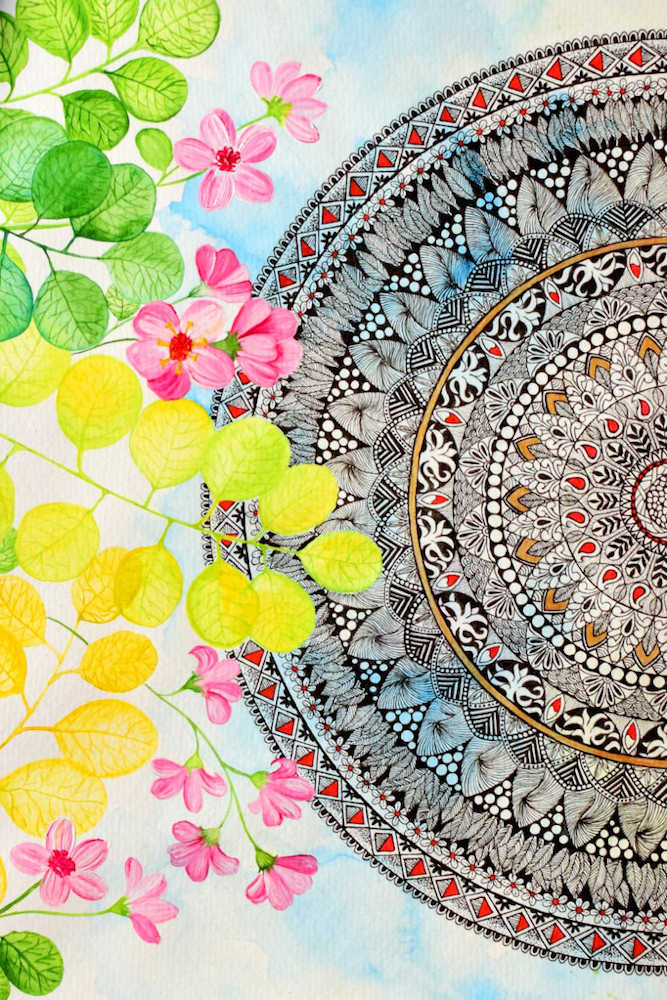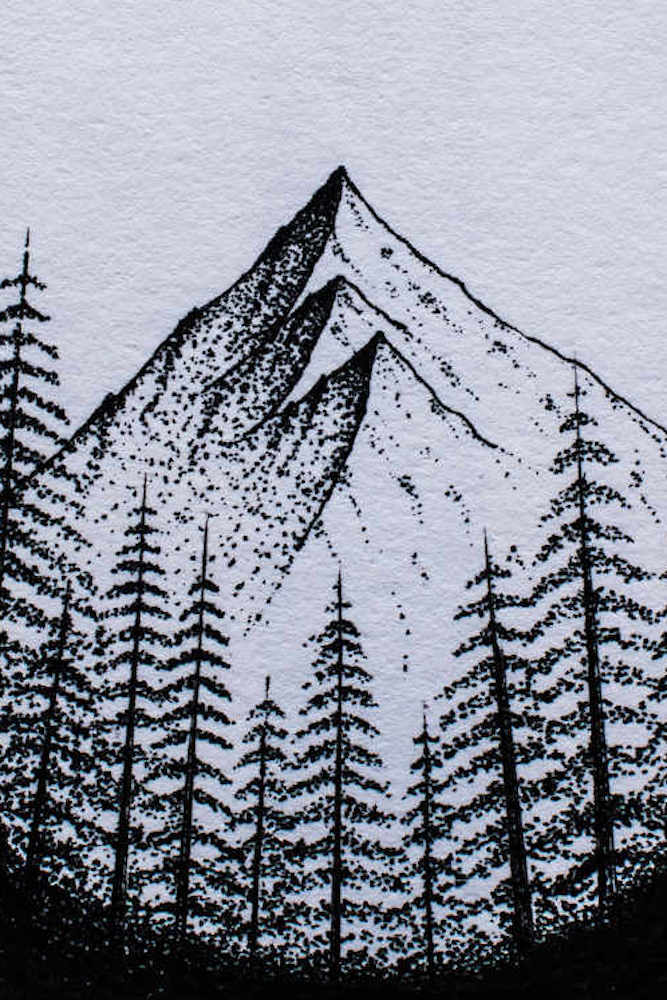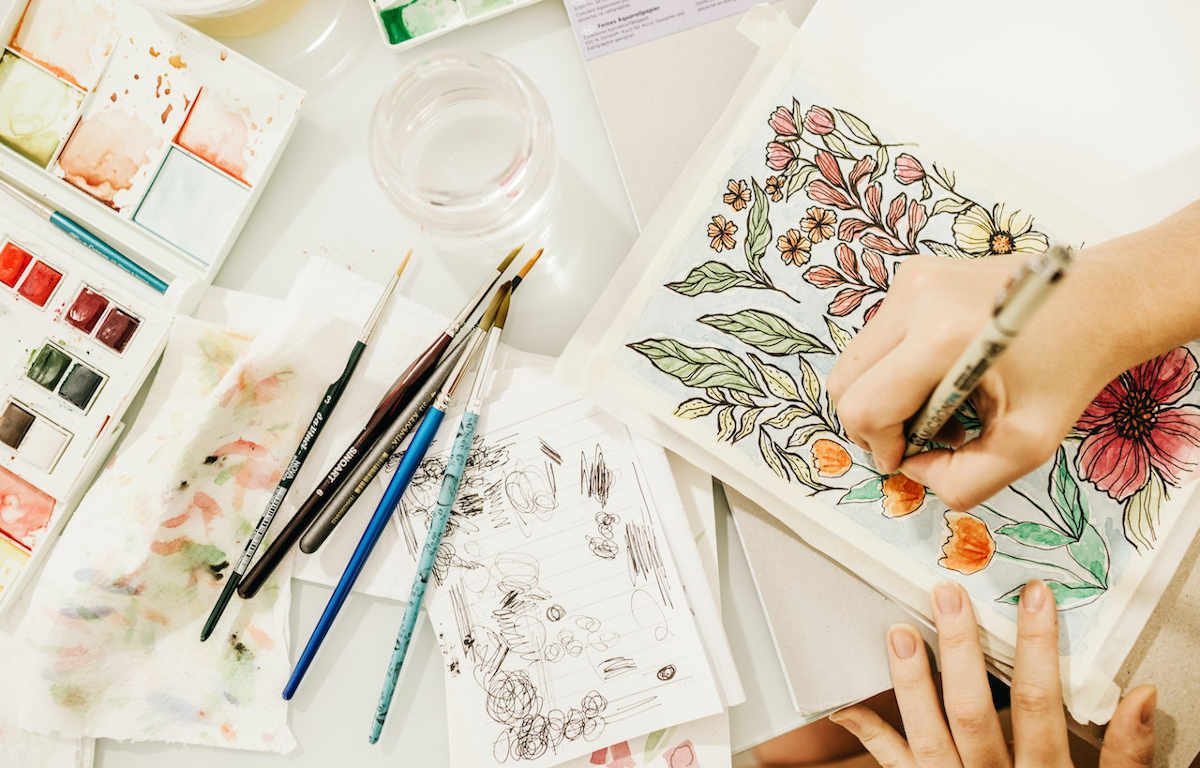Creativity can be an intimidating topic for most people. They shy away from trying anything artistic out of fear they will be bad at it or that they will be mocked. Art journaling can help you explore your creative side while helping you destress, reducing your inhibitions, and increasing playfulness. With a minor investment in materials, you can be on your way to exploring your creative side through a visual journal. Art journaling is used in therapy for reflection and expression. It has proven to be an effective coping mechanism and supports self care practices.
What Is An Art Journal?
An art journal is a compilation of thoughts, ideas, feelings, stories and memories that you put in a sketch book. Sketch books are made with thicker paper that can deal with materials that are heavier like paint, markers, and glue. You can use any materials you want, and you can also add elements to create collages on the pages. What is key for you to remember is that there is no right or wrong way of doing an art journal. You don’t need to be trained or naturally talented either.
It can be as simple as pen and paper, black and white. Some people like to add colour through coloured pens, markers, pencils, hard pastels, or even paints. Others will use pictures, objects like tickets or leaves, or thread to embroider a design. This adds an element that is found in the environment, or alternatively, has a sentimental value to you. You can use words or full text to express yourself too.
Another important aspect of art journals is that they don’t need to be linear. You can start on any page, and you can go back and add to or alter a previous entry. Sometimes you will see people draw over words they have written, or vice versa, create a story to go with a drawing. If you don’t think you can draw, it doesn’t matter. This is for you. Don’t judge yourself. This is for fun, and a way to get comfortable with being uncomfortable. It does not have to be a masterpiece. This is just a reflection of a moment in time of an element you chose to focus on. It can be real or made up. It can be personal or an observation. But whatever you choose to represent, it should help you find a little mindfulness in the day while you are doing it.
Getting Started
Key to getting started is to not have any expectations of what the end result should look like. Don’t pressure yourself to finish a whole page, even a small section of a page is more than enough. Self-imposed constraints can be added once you are in a regular habit, but only to push yourself in new directions. Find inspiration online or just jump right in if you are feeling adventurous.
All it takes is as little as five minutes a day, where you can focus and be mindful of your creative time. If you can only dedicate one day a week that is fine too. In that case, try to give yourself a bigger chunk of time if possible, like thirty minutes. Have your sketch book and some supplies readily available to remove a barrier to starting. If space is limited, keep them in a small box or tray that you can easily pull out. You can carve out alone time to do it, or you can do it in the company of others where everyone explores their own creative side. You can also take it with you throughout the day to jot ideas down when they come.
Tips For Marks
In order to not get stuck starring at a blank page, below are some tips to help you get started marking the page. These are merely cues that you can use:
- Doodle with nothing specific in mind and see what comes out. If you do it in black and white, you can then go back and colour sections with colouring pencils, markers, or paints.
- Create a gradient of colours on the page with watercolours. You can then use it as a background for a drawing, your writing, or just leave it as is for its own merit.
- Pick a simple shape or pattern, draw and repeat it throughout the page. You can vary the size of it, or colour, to create variety. This can also serve as a background for additional exploration.
- Stamp a pattern onto the page as the main background or as part of a larger image that you draw. Additionally, bring in another element such as a word or a photo that can represent a self care goal you are currently working on.
- Try location sketching. Go to a spot either in nature or a building with architecture that appeals to you and spend some time trying to draw it. It doesn’t need to be perfect or realistic. It can be an abstract interpretation of what you are looking at or an element of it.
- Collage work can include both drawn and found elements. Try to limit the thickness of objects to ensure you can still close your book when you are done. You can also work on lose pieces of paper that are then added to the book later if you are on the go.


Benefits To Art Journaling
The main benefit to art journaling is an improved ability to be mindful. By focusing on the marks you are putting down on the page, it frees up your mind of negative thoughts that are nagging you. Your breath starts to slow down, and cortisol levels start to drop, reducing the stress you feel. When working with repetition or patterns, it helps slow down the mind. And by doing a manual, analog activity, it reduces your screen time, further supporting your brains wind-down from external stimuli.
By keeping your work small in scale, it also helps you to limit the time invested, making it more likely you’ll do it on a regular basis. If you try to take on too much at once, you will not enjoy yourself or the process. It is best to build up your practice over time. Through art journaling you’ll gain insight into you as a person, and it can help identify patterns in thoughts, behaviours, and preferences.
Art journals are a great way to develop your creativity!
By choosing to use creativity as one of the tools for self care, you can support other self care tools. Art journaling can be great for gratitude journaling, writing down goals or affirmations, and exploring emotions or thoughts that are bothering you. Working in your art journal out in nature can also amplify the benefits of being outdoors. Not to mention, the added resource of endless inspiration from which to draw from, pun intended!
Your art journal is private, embrace the results, and if you want to share, that is fine too. If the other person criticizes or judges your work, don’t let it discourage you from continuing. No two art journals will ever be the same. Someone not understanding how you express yourself is not a big deal. Don’t let that affect your self-worth. Once your comfort level starts increasing, your self-esteem will too. You will find that by removing self-imposed barriers in one area of your life, it will become easier to do so in others.
IMAGE CREDITS: Feature image – Pexels | Jonathan Borba. Article images (left to right) – Unsplash | Swati H Das & Nicolas Pinilla.

